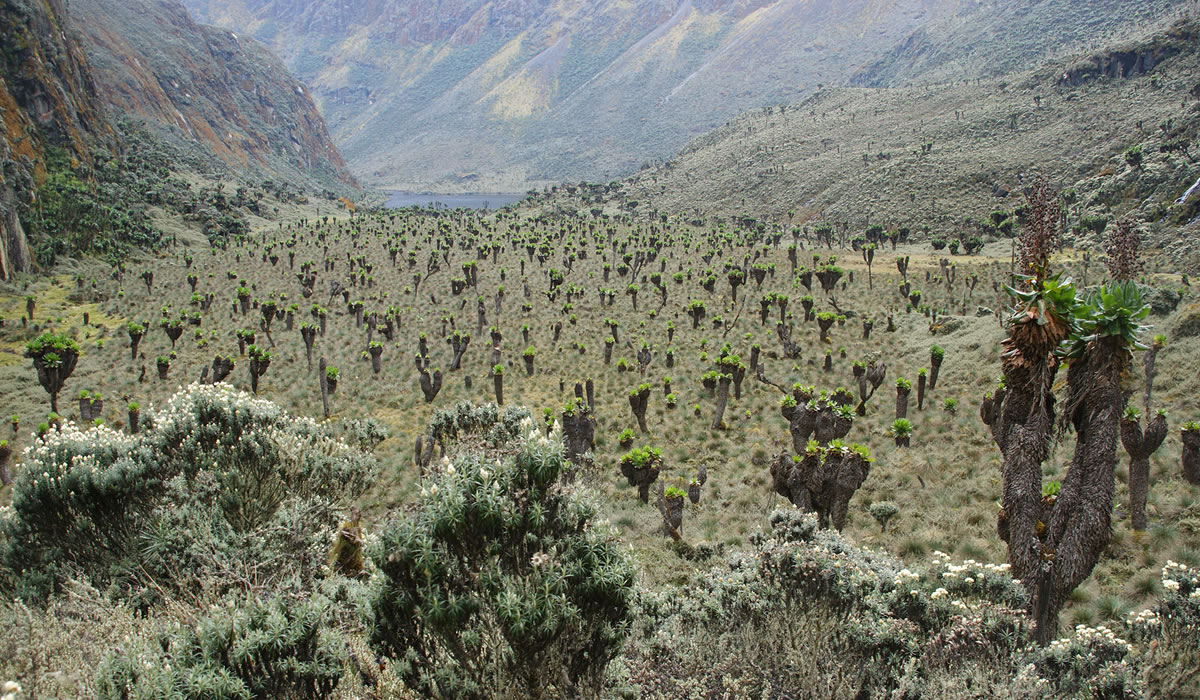Tucked away in western Uganda, bordering the Democratic Republic of Congo, lies a hidden gem for intrepid travelers and nature enthusiasts, Rwenzori Mountains National Park. Often overshadowed by Uganda’s more famous attractions like Bwindi Impenetrable Forest or Murchison Falls, this park offers an unparalleled experience of alpine adventure, spectacular scenery, and rich biodiversity. Also known as the “Mountains of the Moon”, the Rwenzori range is one of the most unique and least explored mountain ecosystems in the world. For those seeking the thrill of high-altitude hiking or the serenity of mist-covered peaks, Rwenzori Mountains National Park is a treasure worth discovering.

An Overview of Rwenzori Mountains National Park
Established in 1991 and declared a UNESCO World Heritage Site in 1994, Rwenzori Mountains National Park covers an area of about 996 square kilometers. The park protects the higher reaches of the Rwenzori Mountains, which boast Africa’s third-highest peak, Mount Stanley rising to 5,109 meters (16,762 ft) above sea level. Unlike volcanic ranges like Kilimanjaro or Mount Kenya, the Rwenzoris are a result of tectonic uplift, making them geologically distinct.
Often cloaked in mist and snow, the park features a surreal landscape of glacial lakes, boggy valleys, moss-draped forests, and giant lobelias and groundsels plants that seem straight out of a fantasy novel. Its unique climate zones, ranging from tropical rainforest at the base to alpine meadows and glaciers at the top, support a wealth of flora and fauna found nowhere else on earth.
Things to See and Do in Rwenzori Mountains National Park
-
Trekking and Mountain Climbing
The most popular activity in the park is trekking. Whether you’re a seasoned mountaineer or a passionate hiker, Rwenzori has something for every level. The Central Circuit Trail and the Kilembe Trail are the two main routes used by trekkers. These multi-day hikes—ranging from 7 to 12 days—lead you through a mesmerizing progression of vegetation zones: montane forest, bamboo, heather, and moorland before finally reaching the glaciated peaks.
For the ultimate challenge, summit expeditions to Margherita Peak on Mount Stanley are possible, requiring crampons and ice axes to traverse the glaciers. It’s one of the most demanding climbs in Africa, often described as more technically difficult than Kilimanjaro.
-
Scenic Beauty and Photography
The park is a photographer’s dream. From misty waterfalls and moss-laden trees to panoramic views of snow-capped peaks, every turn offers a frame-worthy shot. The constantly changing weather and light conditions make the mountains appear ethereal and ever-mystical. Lake Mahoma, for example, is a popular spot for photographers due to its serene setting amid alpine vegetation.
-
Birdwatching
Rwenzori Mountains National Park is home to over 217 bird species, including several Albertine Rift endemics. Enthusiasts can expect to spot birds such as the Rwenzori turaco, long-eared owl, dusky crimson-wing, and handsome francolin. The dense forests and mountain valleys serve as an excellent birding environment, especially for those with patience and a good pair of binoculars.
-
Wildlife Watching
While the park is not primarily a wildlife safari destination, it still harbors a variety of mammals including forest elephants, Rwenzori duikers, bushbucks, and giant forest hogs. Primates like black-and-white colobus monkeys and blue monkeys are often seen swinging through the trees. However, due to the thick vegetation and terrain, wildlife sightings can be elusive.
-
Cultural Encounters
The Bakonzo people, who inhabit the foothills of the Rwenzori, have a rich cultural heritage linked to the mountains. Visitors can engage in community tours that include traditional dances, storytelling, banana beer brewing, and guided village walks. These encounters provide an enriching perspective on how local communities have coexisted with this mountainous environment for centuries.
Best Time to Visit Rwenzori Mountains National Park
The best time to visit Rwenzori Mountains National Park is during the dry seasons, which occur from December to February and June to August. During these months, the trails are less muddy, visibility is better, and climbing conditions are safer.
That said, the Rwenzori region is known for its high rainfall and unpredictable weather year-round. It’s not uncommon to experience rain even in the “dry” season, so waterproof gear is a must. If you’re aiming to summit the higher peaks, plan well in advance and be flexible with your itinerary.
Where to Stay
Accommodation options near and within Rwenzori Mountains National Park cater to a range of preferences and budgets. Here are some of the best options:
- Equator Snow Lodge
Located at the gateway to the park in the Kilembe area, this lodge offers a comfortable and scenic base for trekkers. With cozy stone cottages, excellent food, and a rustic mountain atmosphere, it’s ideal for those beginning or finishing the Kilembe Trail.
- Rwenzori Backpackers
A budget-friendly choice for solo travelers or backpackers, this lodge provides basic amenities, local meals, and guides for short treks. It’s located close to the Ibanda trailhead of the Central Circuit.
- Ruboni Community Camp
Run by the local Bakonzo community, this eco-lodge provides simple yet charming accommodation with stunning views of the Rwenzori foothills. It’s a great option for travelers who value cultural exchange and sustainable tourism.
- Hotel Margherita
Situated in Kasese town, about 5 km from the park entrance, Hotel Margherita is a convenient choice for those who want to explore the park on day excursions or take short hikes. It also offers more urban comforts including electricity and Wi-Fi.
Travel Tips and Practical Information
- Permits and Guides: All trekking within the park requires a permit and a registered guide, usually arranged through the Rwenzori Mountaineering Services (RMS) or a tour operator.
- Fitness Level: The treks are physically demanding. Prepare with cardio and strength training if you plan to attempt higher altitudes.
- Gear Up: Waterproof hiking boots, warm clothing, gaiters, gloves, and trekking poles are essential. Equipment rental is available in Kasese, but bringing your own gear is advisable for a comfortable experience.
- Health Precautions: Malaria is present in the region, so take prophylactics. Also, altitude sickness can affect climbers above 3,000 meters; acclimatization is important.
- Getting There: The park is accessible by road from Kampala (approx. 7-8 hours) or by domestic flight to Kasese Airstrip, followed by a short drive to the trailhead.
Why Visit Rwenzori Mountains National Park?
While Uganda is better known for gorilla trekking and savannah safaris, Rwenzori Mountains National Park offers something truly different: an adventure into the heart of Africa’s mystical mountains, where glaciers shimmer above the equator and mist clings to towering peaks. Whether you’re looking to conquer Margherita Peak, experience the tranquility of high-altitude nature, or connect with local cultures, Rwenzori offers one of Africa’s most rewarding and off-the-beaten-path experiences.
In an age where more travelers seek authenticity and unspoiled nature, Rwenzori Mountains National Park stands as a powerful testament to the rugged beauty and resilience of the natural world. Pack your boots, summon your spirit of adventure, and prepare to be transformed by the magic of the Mountains of the Moon.

